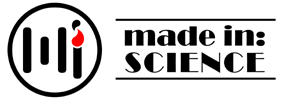Question:
What differences can we observe between the fungi and bacteria that grew on our petri dishes?
Hypothesis:
Before looking at your petri dishes under the microscope, think about what you expect to find based on where your sample came from.
Use the structure below to write your hypothesis:
If (the surface is…)
then (I think I will see more/less of certain microorganisms),
because (give a scientific reason why).
Example:
If the sample came from a phone screen,
then I think I will see more bacteria than fungi,
because phones are touched a lot and bacteria spread easily from hands.
Objectives:
Observe microorganisms (bacteria and fungi) under a microscope to differentiate visible characteristics of bacteria and fungi and understand how environmental microorganisms can grow in nutrient-rich environments.
Materials:
- Petri dishes with grown microorganisms (from previous experiment)
- Optical microscopes
- Glass slides and cover slips
- Inoculating loop or sterile swab
- Dropper with distilled water
- Methylene blue or lactophenol cotton blue (for staining)
- Disposable gloves
- Lab coats or aprons
- Paper towels and alcohol for cleaning
Procedures:
1. Introduction:
Recap of the previous experiment: Observe the petri dishes from the previous experiment. What do you see?
2. Sample Preparation
- Choose one colony from the petri dish (bacteria or fungi).
- Use a sterile swab or inoculating loop to gently collect a small sample.
- Place the sample on a glass slide.
- Add 1 drop of water (for bacteria) or 1 drop of stain (methylene blue for bacteria, lactophenol cotton blue for fungi).
- Carefully place a cover slip over the sample.
- Label the slide with the sample name and source.
3. Microscope Observation
- Follow the microscopy procedures!
- Start at low magnification (4x or 10x), then increase to 40x if needed.
- What do you see?
- For bacteria: look for tiny dots or short rods, sometimes in clusters.
- For fungi: look for thread-like structures (hyphae) and possibly spore-producing bodies.
Results:
Slide #1
Source: __________________________
Magnification: ____________
Sketch:
(space for drawing)
Label what you see: ________________
Is it bacteria or fungi? ________________
How do you know? ______________________
(Repeat for Slide #2 if they prepare more than one.)
Discussion:
Answer the questions:
- What kinds of microorganisms did you find?
- Which environments had more bacteria / fungi? Why?
Conclusion:
Answer the questions:
- Why do you think different places grow different organisms?
- How do bacteria and fungi help or harm us?
